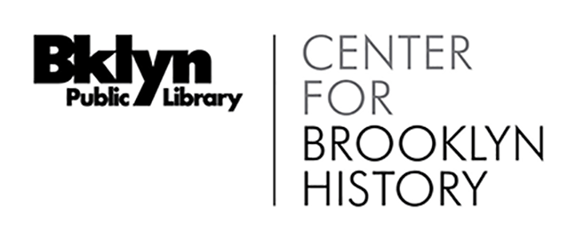Seidl Society Records
Call Number
Date
Creator
Extent
Language of Materials
Abstract
Anton Seidl (1850-1898), an influential Hungarian conductor, came to New York City in 1885 and became affiliated with the Metropolitan Opera and the New York Philharmonic Society. The Seidl Society of Brooklyn, created by Laura Holloway Langford and other affluent female patrons of music in Brooklyn, sponsored programs featuring Seidl at the Brooklyn Academy of Music and at Brighton Beach. This collection contains the papers of the Seidl Society including roughly 300 correspondences from Seidl to society President Laura Carter Holloway Langford, roughly 300 society programs and program notes, five scrapbooks from 1889-1898, four speeches and news clippings, and undated materials.
Biographical Note
Conductor Anton Seidl was born in Hungary on May 7, 1850. As a young man, Seidl worked as a copyist for composer Richard Wagner and developed a professional friendship with Wagner, whose recommendation appointed him as the conductor to the Leipzig State Theater, where he remained until 1882. In 1885 Edmund C. Stanton, the director of the Metropolitan Opera House invited Seidl to come to New York as conductor of German opera and Seidl debuted at the Metropolitan Opera House with a successful performance of Lohengrin on November 23, 1885. From that time until his death he lived in New York, and in 1891 became a naturalized American citizen. When German opera was temporarily dropped at the Metropolitan in 1891, Seidl became conductor of the Philharmonic Society of New York. During the 1895-1897 seasons he again conducted German opera at the Metropolitan and in 1897 visited London and Bayreuth, Germany to conduct special performances. A movement was inaugurated in New York to form a permanent Seidl orchestra and to guarantee its expenses but these plans were interrupted by Seidl's sudden death from ptomaine poisoning on March 28, 1898.
Biographical Note
Laura Carter Holloway Langford (1848-1930) was a well known writer, journalist, suffragist and activist who founded the Seidl Society as a philanthropic enterprise. Langford was born in Tennessee and was a cousin of President Andrew Johnson. As a widow during the term of his presidency, she took up residence in the White House. It was during this time that she wrote the book "The Ladies of the White House," an exceedingly successful book of its time, translated into several languages. After the Civil War, Langford's family decided to relocate to Brooklyn. Langford lived at 181 Schermerhorn Street between 1870 and 1884, during which time she served on the editorial board of the Brooklyn Daily Eagle. Out of an interest in Seidl's talent and an aspiration to bring quality music to all of Brooklyn's residents, she started the Seidl Society in 1889. Devoted to music and charity work, the society of over 300 women brought music to underprivileged women and children in Brooklyn through free outdoor concerts at Brighton Beach and Coney Island. These concerts were all day events including meals and time to enjoy the beaches. The society also presented lectures by prominent feminists, including Elizabeth Cady Stanton and Susan B. Anthony. In 1889 Langford married her second husband Colonel Edward L. Langford, secretary and treasurer of the Brooklyn and Brighton Beach railroad and president of the Fulton Elevated Railroad.
Arrangement
Folders arranged alphabetically and then chronologically. Folder contents arranged chronologically.
Scope and Contents
The Seidl Society Records consist of correspondence, scrapbooks ("scrap albums"), programs and program notes, telegrams, miscellaneous items, photographs, and speeches written by Seidl. The bulk of the correspondence consists of letters from Seidl to Langford. Other correspondence includes letters from Seidl's wife, Auguste Kraus Seidl; Lilli Lehmann, a German operatic Soprano; and the Cuban Army Sanitary Corps regarding a benefit concert for wounded Cuban soldiers during the 1896 Cuban struggle for liberty, the second major War of Cuban Independence, commonly called the War of '95. There are also a few copy drafts written by Langford to Seidl. The letters provide details of the society concerning payment for Seidl and his orchestra, program scheduling, meetings between Seidl and Langford, and mention a misunderstanding with Seidl and the society which caused a name change in 1896 to The Brooklyn Symphony Society. The scrapbooks chronicle the society mainly through newspaper clippings ranging from 1889-1898. The albums also include some programs and announcements and ticket stubs from society events. Articles of note in these scrapbooks include the Society's "Free Cuba Benefit" in 1896, the destruction of the Seidl Music Hall by a storm in 1896, and articles about Seidl's death and funeral. The programs and program notes written by Seidl are from 1889-1896. Finally, the collection includes three portraits of Seidl and one copy negative of a letter.
Subjects
Genres
People
Topics
Conditions Governing Access
Open to researchers without restriction.
Conditions Governing Use
All published materials contained within the collection are within the public domain. All correspondence by Anton Seidl, Auguste Kraus Seidl, and Lilli Lehmann are within the public domain. All other unpublished materials are expected to enter the public domain either 70 years after the death of their author or, when the author is unnamed or a death date cannot be found, 120 years after their date of creation.
Preferred Citation
Identification of item, date (if known); Seidl Society Records, ArMs 1977.175, Box and Folder number; Brooklyn Historical Society.
Immediate Source of Acquisition
Collection received from John S. Roberts on June 8, 1954.
About this Guide
Processing Information
Collection processed by Sarah O'Holla in November and December, 2006. Further processing and entry into Archivist's Toolkit by Katherine Christensen in July, 2009. Visual materials added to collection by John Zarrillo in September 2014. Additional finding aid revisions by John Zarrillo, September 2015.
